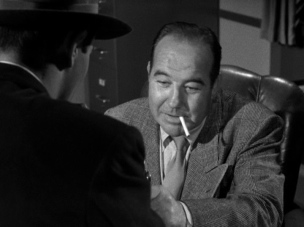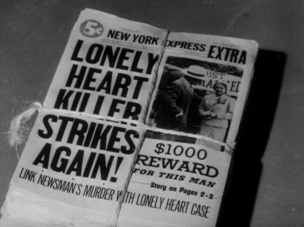
The Samuel Fuller Collection DVD boxed set is a bit of a misnomer. Several of these movies can’t really be described as Sam Fuller movies. They’re movies released by Columbia with a Sam Fuller connection, but that’s not quite the same thing. Adventure in Sahara, dating from 1938, was based on an original story by Fuller but that’s the extent of his contribution.
This is a fairly standard Foreign Legion adventure. Even in 1938 the cruel sadistic Foreign Legion officer who drives his men to mutiny was a rather tired cliché.

In this case the cruel sadistic officer is Captain Savatt (C. Henry Gordon). When American aviator Jim Wilson (Paul Kelly) receives word that his brother Robert is dead, he decides he wants to meet this Captain Savatt. His brother had enlisted in the French Foreign Legion and his letters had suggested to Jim that Captain Savatt’s brutal discipline had been the cause of Robert’s death. So Jim now enlists in the Foreign Legion and requests that he be sent to the unit commanded by Captain Savatt.
Captain Savatt’s command is Fort Agadez, a remote outpost in the Sahara Desert. Jim soon discovers that Savatt is more than just a brutal disciplinarian. He is a sadist who enjoys hounding men to their death. Eventually the men cannot take this treatment any longer. They propose to mutiny, and they have selected Jim Wilson to lead the mutiny.

The situation is complicated for Jim by the presence of his girlfriend Carla (Lorna Gray) at Fort Agadez. Carla is also a flyer and she had set out to look for Jim. Her plane came down near the fort and she is now Captain Savatt’s guest. Carla doesn’t understand why Jim would be leading a mutiny and she doesn’t like it.
Also unhappy is Lieutenant Dumond (Robert Fiske). Dumond is a good officer and he is also a humane man. The men have no quarrel with Dumond but when the mutiny breaks out he feels that his duty compels him to oppose it. Nobody, least of all Jim Wilson, wants to harm Dumond but they don’t really know what to do with him.

Jim had come up with an ingenious plan for disposing of Savatt in such a way that it would appear that Savatt and the men loyal to him had been killed by the Arabs. Savatt and his loyal troops are given one bullet each and enough food to get them well clear of the fort, but not enough food to allow them to reach the nearest outpost. But is a man like Savatt going to be so easy to kill? Whatever his faults Savatt is a brave man of iron determination and he has no intention of perishing in the desert. He intends to survive and to take his revenge on the mutineers.
The characterisation in this movie is pretty simplistic. Savatt is a cardboard cut-out villain while Jim Wilson is the brave noble hero. C. Henry Gordon manages to make Savatt a memorable figure even if he can’t give him any great complexity. Paul Kelly is unable to make Jim Wilson much more than a clichéd and slightly dull hero. The other characters in the movie are divided into equally simplistic categories of good guys and bad guys. Dwight Frye probably could have made Gravett, Savatt’s loyal informer among the men, into something interesting but he isn’t given sufficient screen time.

Director D. Ross Lederman churned out enormous numbers of B features. His one great virtue as a director was his ability to keep within limited budgets and tight shooting schedules. He was typical of the directors who spend their whole Hollywood careers turning out unambitious but solid B-movies. Unambitious and solid seems like a fair way of describing this movie.
It’s impossible to say to what extent Maxwell Shane’s screenplay reflects Fuller’s original story. The story was in any case early Fuller, before he developed his much more colourful and much more intense mature style.
The DVD offers us a very good print of this largely forgotten movie. em>Adventure in Sahara
is a harmless time-waster. If you buy the Sam Fuller boxed set you’ll buy it for other more notable movies but there’s no reason not to give this one a spin.





















